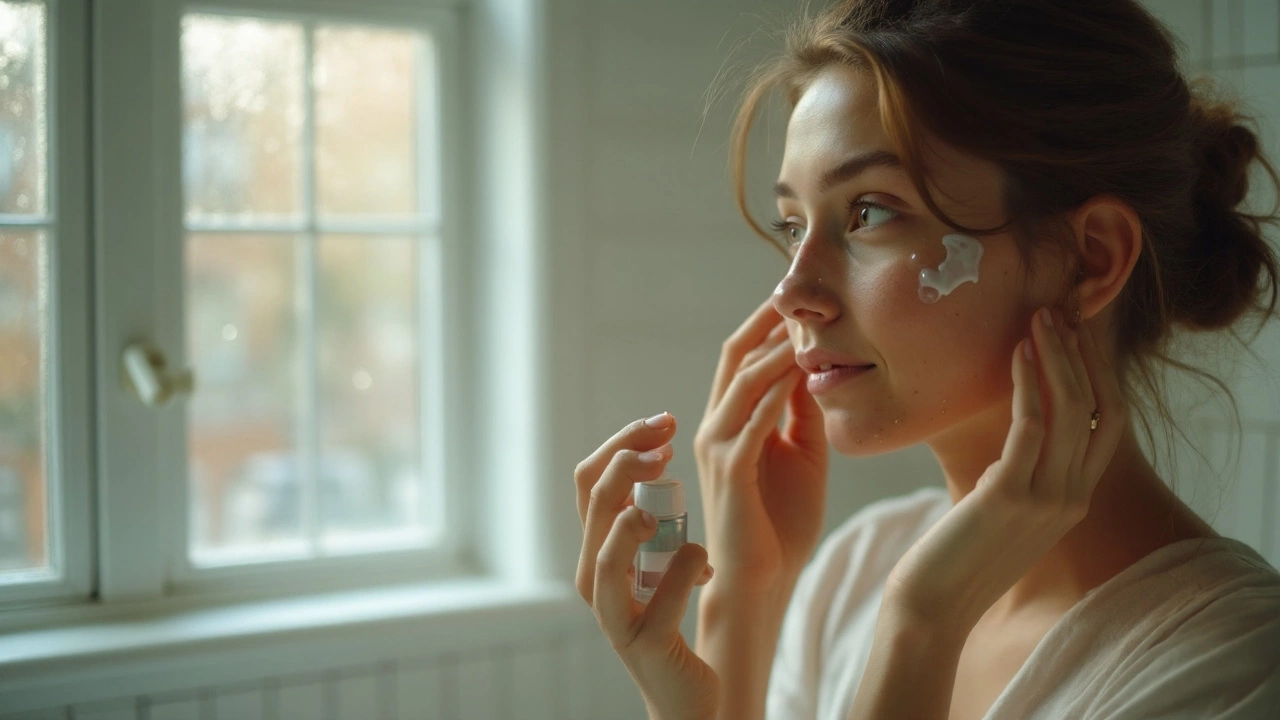September 2025: Your Quick Guide to Skincare, Anti‑Aging & Natural Ingredients
Welcome to our September roundup. If you’ve been scrolling through the blog, you’ve probably seen a mix of how‑to posts and science‑backed guides. Below you’ll find the main takeaways from three of our most‑read articles, broken down into bite‑size advice you can start using today.
Serum vs Moisturizer: Which Goes On First?
First up, the age‑old question: should you slap on serum before or after moisturizer? The short answer is simple—serum goes on first. Because serums are lightweight and packed with active ingredients, they need direct skin contact to work. Moisturizer is thicker; it locks in the serum’s benefits and prevents water loss.
Here’s a quick routine you can try:
- Cleanse with a gentle, pH‑balanced wash.
- Pat your face dry—don’t rub.
- Apply a few drops of serum, spreading it evenly.
- Wait 30‑60 seconds for absorption.
- Follow with moisturizer that matches your skin type.
If you skip the waiting step, you risk diluting the serum’s actives, which can make the whole routine less effective. This order works for watery gels, oil‑free serums, and even thicker vitamin C formulas.
The Real Holy Grail of Anti‑Aging (2025 Edition)
There’s no magic cream that stops time, but research points to a five‑point system that consistently delivers results. Think of it as a “combo pack” for younger‑looking skin.
- Sunscreen every day. UV rays are the biggest wrinkle‑maker. A broad‑spectrum SPF 30+ is non‑negotiable.
- Retinoids. Whether you choose a prescription strength or an over‑the‑counter retinol, these boost collagen and speed cell turnover.
- Movement. Regular cardio and strength training improve circulation, delivering nutrients to skin cells.
- Sleep. Aim for 7‑9 hours. Deep sleep is when growth hormone does its repair work.
- Nutrition. Antioxidant‑rich foods—berries, leafy greens, and omega‑3 fatty acids—help combat oxidative stress.
Combine these steps with “smart treatments” like peptide serums or light therapy, and you’ll notice smoother texture and firmer tone within a few months. Skipping any one of these pillars can stall progress, so keep the checklist handy.
Finally, we also covered the best natural products for skin in 2025. If you prefer plant‑based options, look for ingredients that actually have data behind them. Manuka honey works as a gentle antibacterial and humectant, especially for acne‑prone or cracked skin. Jojoba oil mimics the skin’s own sebum, making it ideal for dry or oily types alike. Colloidal oatmeal calms irritation—perfect for eczema or after‑sun redness. Green tea extract offers antioxidant protection and can reduce redness when used in a toner or serum.
When you’re picking a product, match the ingredient to your skin goal. Want to brighten? Look for vitamin C or niacinamide. Need extra barrier support? Choose ceramides or squalane. And always patch‑test new items before full‑face use.
That’s the essence of September’s content. Use the serum‑first rule, follow the five‑point anti‑aging system, and pick natural ingredients that suit your skin’s needs. Bookmark this page, try the steps, and let us know how it works for you in the comments!
Serum vs Moisturizer: Which Goes On First?
Find out the correct order for serum and moisturizer, why layering matters, and how to build an effective routine for every skin type.
What Is the Holy Grail of Antiaging? Evidence‑Backed Guide (2025)
No magic cream. The real “holy grail” is a system: sunscreen, retinoids, muscle, sleep, nutrition, and smart treatments. Clear steps, evidence, and pitfalls to avoid.
Best Natural Products for Skin (2025): What Really Works by Skin Type
No one-size-fits-all. See the best natural skin ingredients by goal and skin type, how to use them, and what to avoid. Evidence-backed and NZ-friendly.


